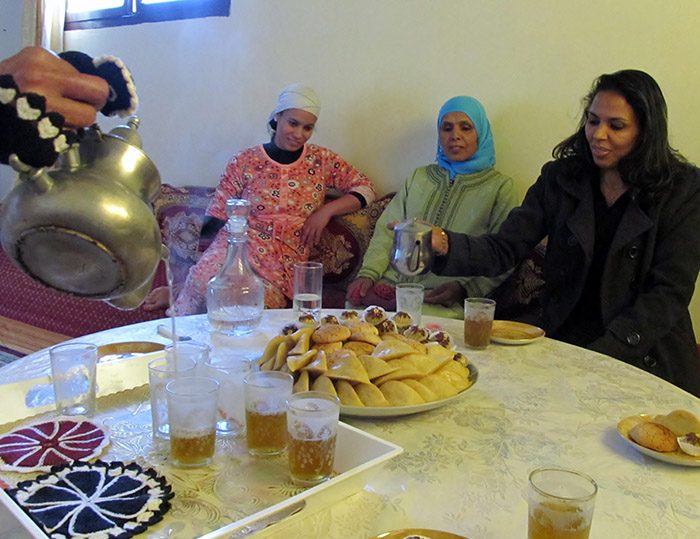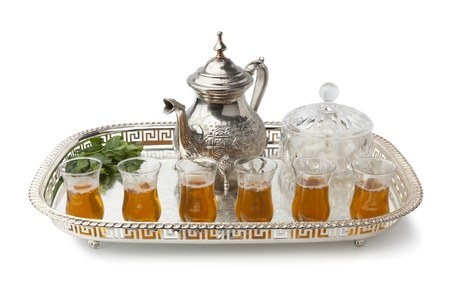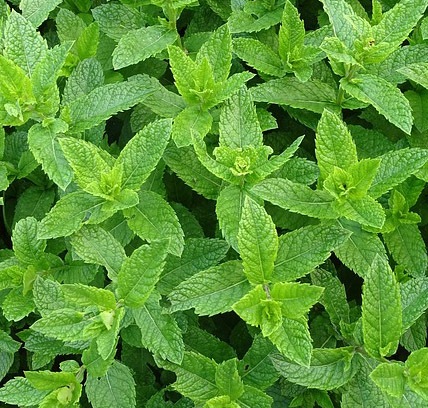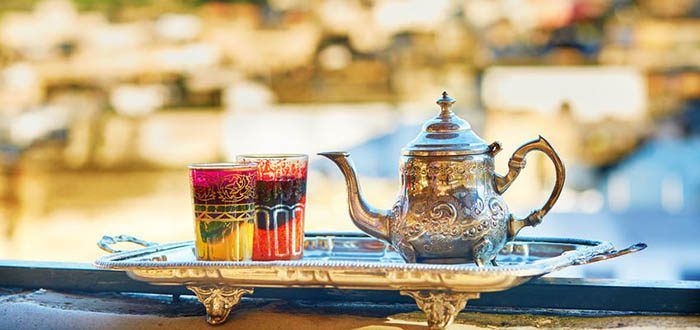History, Tea and beverage
Arabic mint tea : tradition and history
The Arabic mint tea, wrongly called “Moroccan tea” is actually a tradition spread throughout North Africa.
It was during the Crimean War that green tea was introduced to North Africa through the port of Mogador (Essaouira) in Morocco and then to the Atlantic Sahara (Western Sahara and Mauritania), the Saoura Valley and the oases of Touat. The Tuaregs got used to drinking tea in the 1940s.
The Touareg, which is not delicate for its food, is refined for tea. He carefully distinguishes as a connoisseur with the different qualities, dedicates to his purchase, a margin of his resources. The Touareg chef Mohamed does not hide from Henry Lhote his enthusiasm for the tea:
“This liquor, you see, is gold, it warms the heart of my old years. Believe me, I could not answer your questions nor I would answer them all wrong, if I had not drunk this elixir, which has the power to remove the vapors, which otherwise always turn around our brain . Tea is the drink of the gods that loosens tongues and opens hearts. ”
It is traditionally prepared from Chinese green tea and Moroccan fresh mint (“nanah” mint). Of course, everyone cannot have access to fresh mint from the garden, which is why Leïla’s Arabic mint tea is an already prepared Arabic tea. Unlike many other mint teas , it contains natural and powerful mint leaves, having no artificial aroma.
a prominent part of Arab culture and society

Mint tea is central to social life in the Maghreb. The serving can take a ceremonial form, especially when prepared for a guest. The tea is traditionally offered to guests as a sign of hospitality.
Arabic tea is a prominent part of Arab culture and society. For centuries, it has been served warmly for guests, business partners, during meetings and social events. As a strong part of the cultural tradition, hot tea has brought family and friends together for hundreds of years. It is served before, after, and sometimes during meals.
Arabic tea is a boon for gatherings, parties, and celebrations as it is not only considered as a polite form of welcoming guests, but it is also a healthy drink. Typically, at least three glasses of tea are served, which is considered impolite to refuse.
The tea is consumed throughout the day as a social activity, with tea bars filling a similar social function to alcohol drinking establishments in Europe and North America.
The main supplier of tea to the Maghreb remains to be China.
Traditionally, the tea is served three times. The amount of time it has been steeping gives each glass of tea a unique flavor, as described in this famous Maghrebi proverb :
“The first glass is as gentle as life,
the second is as strong as love,
the third is as bitter as death.”

The glasses are washed and carefully stored after drinking the “three teas“ being a part of the ceremony. One never serves a single tea, because “only God is unique“, not only two because it would be a lack of generosity, “three teas“, it is “Kanoun” the canon. Unlike Morocco, mint is not used for the first glass, as it’s pungency is very marked; some do not drink the all three glasses, but just drink the third. You can prepare a fourth glass, which does not contain any theine, but to offer a fifth glass would be insulting; it would mean that we wish for the visitor’s departure.
a lot of health benefits
 Also known for its medicinal properties, mint tea is commonly used to get over colds, sore throat, sinus congestion, and stomach ulcers. With high antioxidants and vitamins, peppermint helps in enhancing immunity and health. Seasonal allergies can also be treated by drinking few cups of tea made from rosemarynic acid, an anti-inflammatory agent found in mint. Instead of adding leaves directly to the tea, Nana is made by boiling fresh ground grass with water
Also known for its medicinal properties, mint tea is commonly used to get over colds, sore throat, sinus congestion, and stomach ulcers. With high antioxidants and vitamins, peppermint helps in enhancing immunity and health. Seasonal allergies can also be treated by drinking few cups of tea made from rosemarynic acid, an anti-inflammatory agent found in mint. Instead of adding leaves directly to the tea, Nana is made by boiling fresh ground grass with water
a ceremonial
Tea is traditionally prepared and served by men. It is practically a ritual, in the same way tea is regarded ceremonious in Japanese culture.
a timeless description of the preparation process
It requires two teapots. The tea leaves are scalded in the first teapot, the water of this operation is thrown and then the tea is put to infuse. When this is done, it is decanted into the second teapot, at the bottom of which a burst of the sugar loaf is placed. Then the tea is poured from the teapot into a glass and vice versa until the sugar is melted. This first tea being very strong and hot, is eaten in a small glass, which is most often decorated with flutes coming from Libya. The slow, unchanging ritual will be repeated twice more, giving a total of three little glasses of increasingly lighter color. The same tea leaves are then used for the three decoctions, in which the strength of the beverage decreases as the dosage of sugar increases. The first is an amber green ; very strong and bitter, the second golden yellow; less full-bodied already, the third ; pale, which is a sweet liquor.
Tea poured in glasses, not in cups, is drunk very hot, in small sips; “It is appreciable to drink loudly, sucking the liquid with air“.
Related products : 48H NZ shipping – FREE shipping on order > $35 / International shipping
Leïla’s arabic mint tea is a refreshing green tea from China, generously perfumed with real mint leaves (no aroma) and delicate cornflowers.
The dosage of Leila is very unique, refreshing, with a light green tea. Discover 3 ways to prepare your Leïla’s arabic mint tea.
> More : Discover 3 ways to prepare your Leïla’s arabic mint tea
SHOP



Pingback: 3 ways to prepare your Leïla's arabic mint tea - The Potion Tree